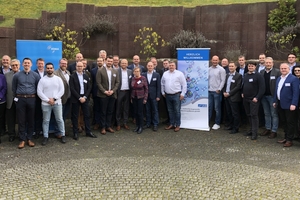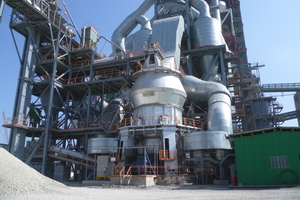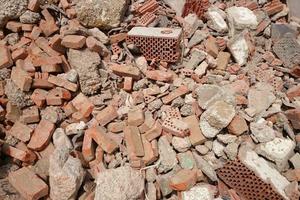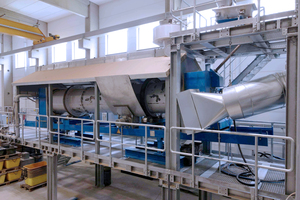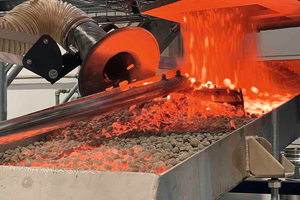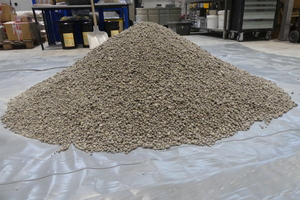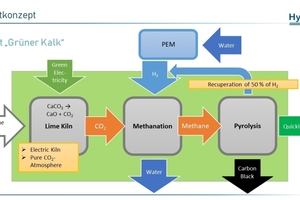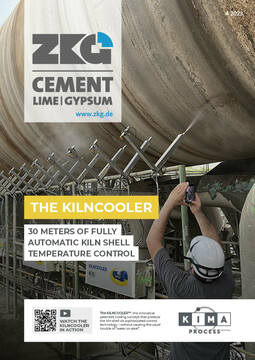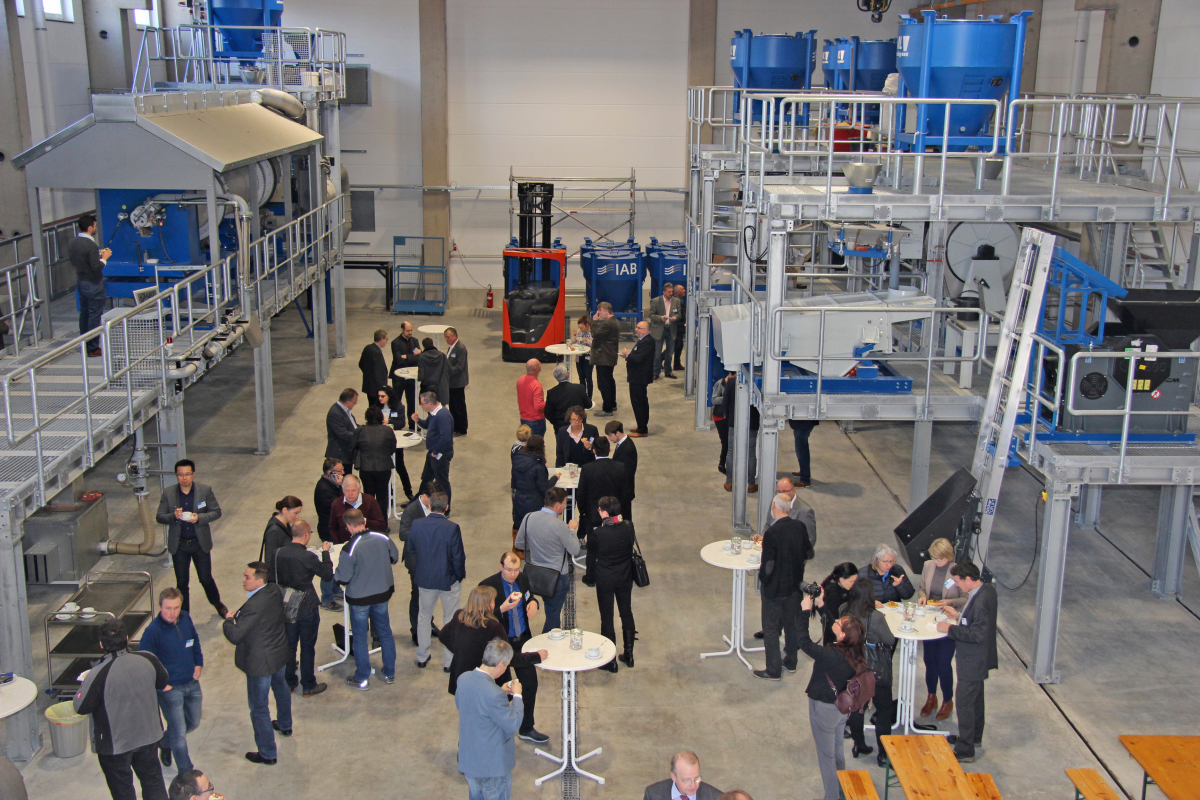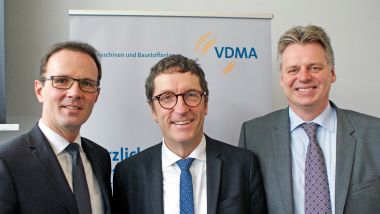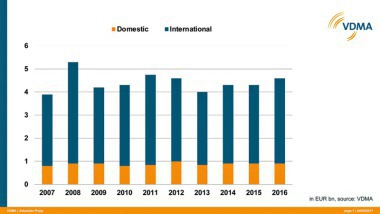Green concrete will become standard
Processes and technologies for more sustainability and CO2 reduction in the production of building materials are increasingly in the focus of manufacturers and users. Some current projects and initiatives as presented at this year’s VDMA Building Materials Plant Day are described in this article.
There is a great need for information in research and industry, so many events and publications deal with the current state of development and the existing technical possibilities, also in the VDMA. As a guest at the IAB – Institut für Angewandte Bauforschung gGmbH in Weimar, the VDMA Building Materials Plant Day in March 2023 informed members and guests about current projects, initiatives and research results.
Loesche GmbH, Düsseldorf
Loesche GmbH from Düsseldorf, on the road in plant engineering with grinding technology for the raw materials industry, deals with calcined clays and their processing. New processes in which steelworks slag is activated or concrete from demolitions is processed, alternative fuels and hydrogen are used as the fuel of the future, all lead to the desired goal of decarbonising concrete as a building material, according to the company. Mankind currently consumes 33.6 billion t of concrete a year worldwide. Replacing energy-intensive clinker as far as possible with calcined clays is a medium-term solution. Depending on the required concrete compressive strength, targeted grinding can save energy. Tests at the IAB with separate and joint grinding of clinker/gypsum, calcined clay and limestone showed that joint grinding is more energy-efficient, but the cement strength class 42.5 R can only be achieved with separate grinding. All tests on this (cement, mortar and concrete) were carried out with an LC3-50 cement, with only 50% clinker content. Of course, there are other aspects that need to be taken into account when grinding clay in order to achieve the best possible quality.
IAB – Institut für Angewandte Bauforschung Weimar gGmbH (Weimar Institute of AppliedConstruction Research), Weimar
The host IAB provided information on its latest experiments with calcination technologies. With thermal plant technology – for example, a pilot rotary kiln – the institute is testing processes that can replace the primary CO2 emitter in concrete, the clinker. In order to be able to offer industry a platform for industrial trials, the IAB is expanding its equipment structure to include a pilot flash calcination plant and a pilot hydrogen furnace, which are currently still under construction.
Excavated soil, at 130 million t per year, and construction and demolition waste, at 89 million tonnes per year, are the dominant waste types in Germany in terms of volume (Source: www.destatis.de, bbs-Zahlenspiegel 2022). The scientists in Weimar are working on the development of recycling routes for this construction waste, also looking at the question, which has hardly been asked so far, of whether energy can be saved in the process.
Due to its thermoplastic properties, the old bitumen present in the asphalt rubble or milled asphalt allows savings to be made on new bitumen and thus potentially on considerable amounts of energy. In the case of waste from the mineral-bound building materials concrete, sand-lime bricks and aerated concrete, studies currently show no energy savings resulting from the building material properties or the manufacturing process. However, they are possible in the case of brick waste and broken masonry compared to the primary building materials if they are utilised in thermal processes. Examples are partial raw material substitution in brick production or the production of lightweight aggregates using broken masonry instead of clay. The production technology for lightweight aggregates was developed at IAB and tested on a pilot scale (see illustrations). This brings the next step - the construction and operation of a technical plant - within reach.
HySON – Institut für Angewandte Wasserstoffforschung Sonneberg gGmbH (Institute for Applied Hydrogen Research Sonneberg), Sonneberg
At HySON institute, one of the topics is the fundamentals and technical challenges of using hydrogen in the building materials industry. The institute sees potential future applications in large-scale industrial steel production by means of direct reduction, in decentralised methanisation for decarbonising CO2-intensive processes and in decarbonising the glass and ceramics industries. The contribution of hydrogen and the effect of hydrogen flames on product quality must be investigated. The necessary burner components and corresponding peripherals must be developed.
Green lime is another topic. Its production is essentially based on three steps. In the lime kiln, the lime is burnt electrically in a CO2 atmosphere, producing a very pure CO2 exhaust gas. This waste gas is mixed with hydrogen and converted into methane and water by microorganisms in a metha-nisation reactor. By means of pyrolysis, the methane can be broken down into its components under high heat in a tin bath: Hydrogen and carbon. This hydrogen can then be fed back into the methanisation process to substitute expensive electrolysis hydrogen.
solid UNIT e.V. – The network for innovative solid construction, Berlin
A young association for innovative solid construction, solid UNIT, had the opportunity to present itself at the Building Materials Plant Day. Initiated in Baden-Württemberg in 2019, the network was jointly founded by companies and institutions at federal level on 7 September 2022. It sees itself as an innovation driver for climate-neutral construction with the aim of supporting the production of CO2-reduced building materials with appropriate manufacturing techniques, sustainable resource management and knowledge transfer, thus promoting solid construction. Solid UNIT communicates via PR channels, organises seminars and conducts political talks to draw attention to technical developments, opportunities and already implemented projects with sustainable building materials. Focal points of work are, for example, serial and modular construction, BIM, CO2-reduced and recycled concrete as well as R-concrete.
The Building Materials Plant Day is an ideal platform for VDMA members to find out about technical developments and share challenges in the industry. A tour of the IAB Technical Centre and a visit to Netzsch Taurus Instruments GmbH rounded off the event on the second day. The next event in spring 2024 is already being planned. A small conclusion on the side: the architecture will have to get used to it in one place or another. Depending on the mixing ratio of an environmentally friendly concrete, the colour may change, actually also in the direction of pink. But that should be a “green” seal of approval in the future.

